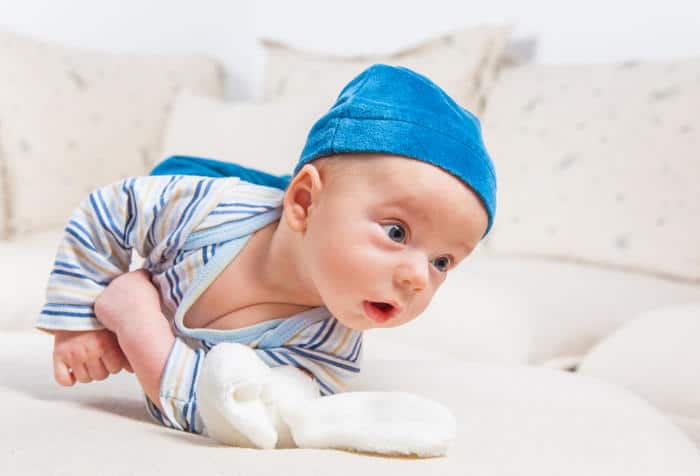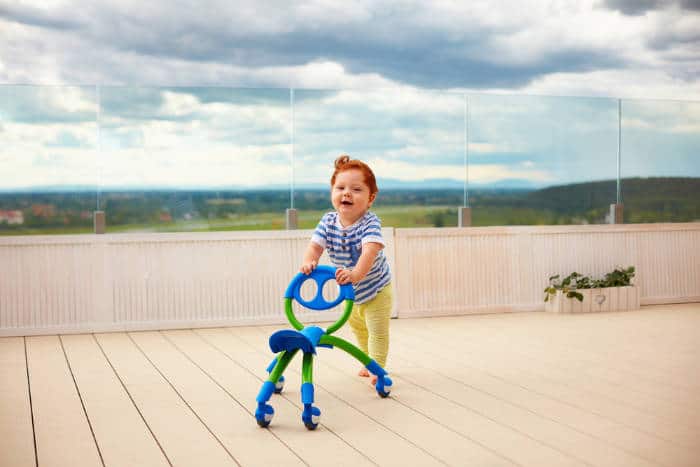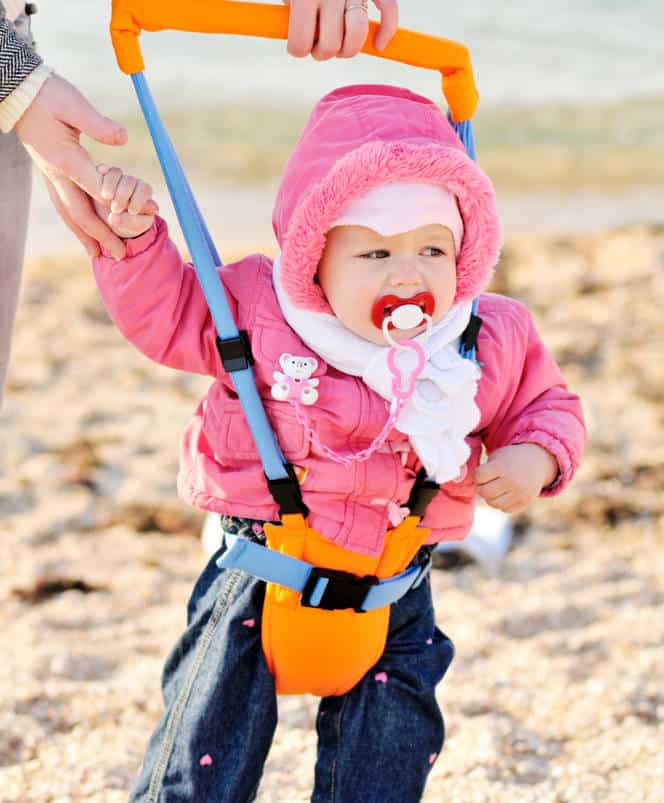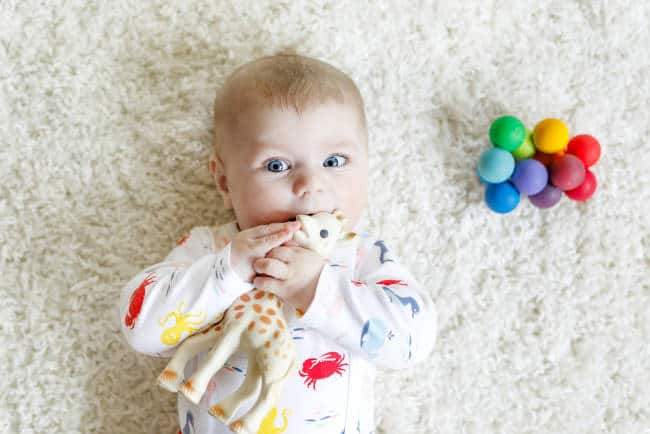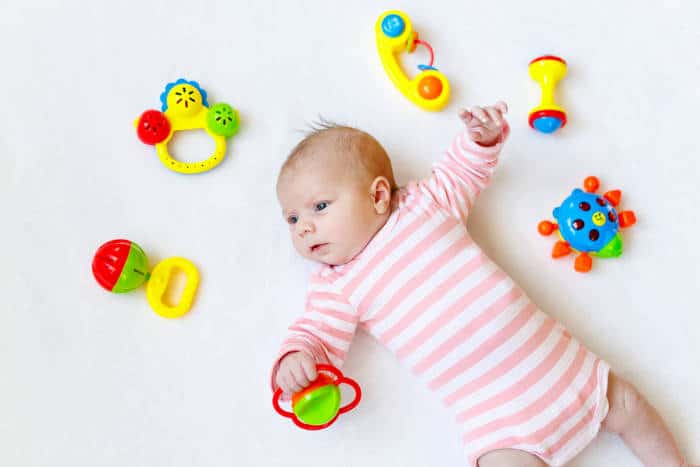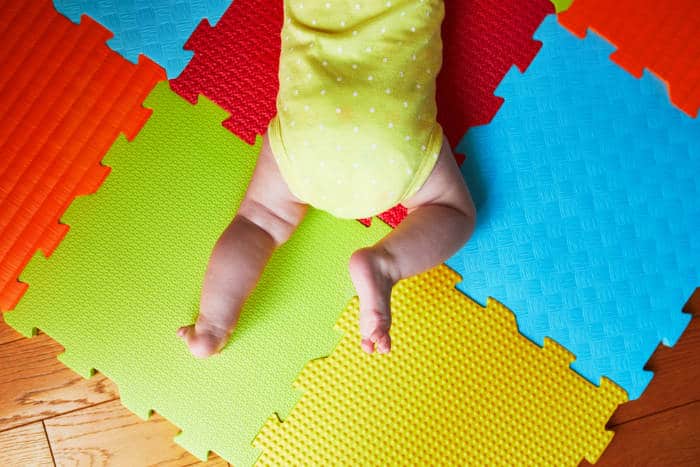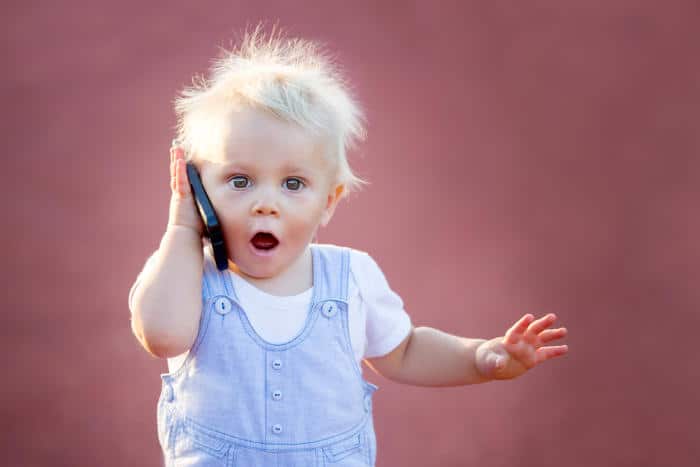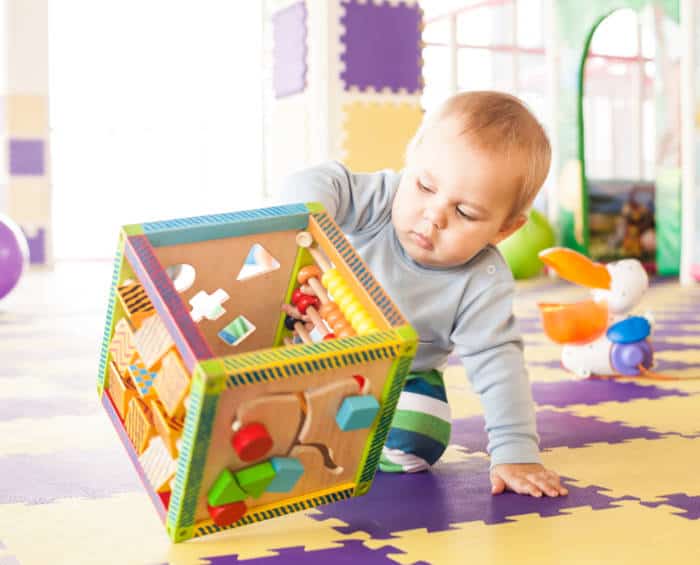When new parents look at their registries and go shopping for their baby, they always want the best of the best. Every toy needs to serve a purpose and like all parents, they picture their baby going on to be a genius, a superstar, a prodigy…
So, not any toy or activity will do. But what do kids need at what ages for peak development? It’s not as complicated as you may think since babies and kids learn best through play. After all, there’s a reason juvenile animals of all species play. It hones important skills they need throughout life and as they mature.
We wanted to outline some of the best activities for babies ages 3-6 months. This is a time of rapid change. Your infant goes from a cooing, mostly stationary baby to a scooting, crawling, and almost walking child in the blink of an eye. Don’t worry though, we’ve gone over exercises, toys, and simple activities that are perfect for this age range. Keep reading for more insight into what your baby will experience from months 3-6.
3-6 Month Baby Development
You might notice your baby developing more social awareness initially with most babies giving their first real social smile by 2-3 months. Your baby is also beginning to understand your facial expressions and likely makes an effort to read your face which is evident by them slightly mirroring your expression.
During the 3-6 month period, your infant becomes more aware of his/her surroundings and the activity around them. They have an idea of how interaction works and they enjoy it when you talk and play with them. They laugh more, kick their legs, and squeal with excitement.
In terms of motor development, your baby should display steady head control and strength during tummy time. Somewhere between 4-6 months, they’ll be able to roll over. Kicking and wiggling while in the tummy time position is also a good indicator that they’re on the right track, as these simple movements prepare them for the next big leap into crawling.
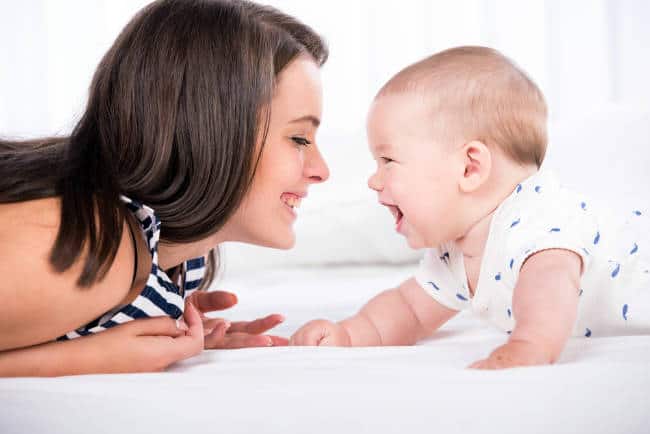
Your baby should also be grabbing for just about everything in their sight. Whether it’s their toes, your phone, a baby rattle or toy, their bottle, they should be grabbing for it. They should also be able to bring their hands to their mouth. Another important milestone and measure of strength to look for is the ability to bear their weight on their legs when assisted. If they struggle with any of those activities, be sure to consult with your pediatrician.
Speech is a little more variable. However, at some point between 4-6 months, your baby may start making simple, one-syllable sounds. Often this is where we see parents gleaming that their baby said “daa” or “maa.” While we aren’t saying that they didn’t speak a real word, this is a developmentally appropriate precursor to actual speech.
Aside from the milestones above, your baby will also be learning to eat solid foods during this time. The most widely accepted timeline places solids at 6 months, but experts will tell you that babies often start to show readiness around 4 months. So watch for signs such as increased interest in food, grabbing at baby spoons, and the ability to drink from a sippy or straw cup.
How can I help my baby’s development?
As you may have guessed, there are a number of helpful activities for stimulating development in babies. They’re all geared around playtime and interaction, so relax, helping your infant’s development is fun and easy.
3-6 Month Old Developmental Activities:
Peekaboo
This is pretty self-explanatory, but if the logistics of playing with an itty bitty baby are a little murky, here’s my best advice. Act silly, hide behind a blanket or your hands, and don’t forget it’s all about surprise and facial expressions. Babies between 3-6 months are all about faces and Peekaboo is the perfect game you can play anywhere. It calmed quite a few fussy spells in our house too.
Read books
Reading books at any age is great for development. Reading to your infant stimulates language, social cues, and exposes them to different tones and pitches in your voice. Not only is it a great bonding activity, reading at an early age is one of the greatest promoters of school readiness and overall cognitive skills.
“Talk” to your baby
Talking to your baby is the best way to introduce language and communication. Using baby talk is also an instinctive practice as it teaches babies pitch, tone, and emotion with its exaggerated elements. Speaking to your baby as if he or she can understand and speak back also has its benefits. Many experts agree that narrating your day is a great way to encourage speech. For example, you might say, “Now, it’s time for your bath, baby,” when you are getting them ready for their nighttime routine.
Smile into mirrors
Holding your baby up to mirrors is entertaining, yes. Most infants can hold that gaze for several minutes before growing bored with the activity. It also helps with visual tracking and neck strength as they turn their heads, touch, or pat the mirror. So, along with vision, and developing a sense of self, mirror time also helps with hand-eye coordination and fine motor skills. Plus, it’s easy! Either hold them up to look in the mirror or introduce a mirror during tummy time.
Practice holding and dropping sensory balls or blocks
Simply handling sensory balls or blocks (objects that have varying textures on the sides) is a great developmental activity. For one, it aids in the development of gross and fine motor skills. Additionally, running their hands and fingers over sensory material helps form important neural pathways in the brain. It’s the same reasoning behind encouraging parents to let their babies go barefoot. Those sensations are extremely important to sensory development. Pick something light enough and soft enough for your infant to handle and let them lead the way. You can show them how to pick up/drop, but independent exploration is essential!
Introduce rattles/noisemakers
Babies love noises. Jingly noises, crackling noises, clicks, beeps, bells, and whistles… They love them all! So it could be a good idea to invest in a variety of noisemakers including traditional rattles, foot/wrist rattles, maracas, bells, and other musical toys. They’ll hone their auditory development while learning cause & effect every time they produce the noise themselves. Musical toys and rattles are also one of those toys that foster independent play as well as offer a fun way for mom/dad to interact. We’ve already put together a handy list of the best baby rattles for you.
Let them feel different textures
Along with textured blocks and balls, you can further sensory development by letting them touch a variety of surfaces. For example, grass, tissue paper, velvet, wood, plastic, and fur are great textures to introduce. You can find board books that offer a good selection as well. Have a look at their stuffed animal collection too if you’d like to incorporate textures into a variety of activities.
Dancing
This one is good for everyone! If you’d like to get them up and moving while stimulating their kinesthetic system, scooping your babe up in your arms and dancing around the kitchen or living room is perfect for a short burst of fun and lots of laughs. When they can bear weight on their legs, you can help them shimmy along too.
Monkey see, monkey do
This is a great game for developing facial recognition, emotional intelligence, and communication. Simply make facial expressions (I.e., stick out your tongue, smile, blow raspberries, blow kisses, etc.) and let your baby try to mimic you. Once your baby starts to smile socially, you can probably give this one a go.
Activity basket
This is a favorite in our household… The idea behind it is basically, gather toys into a small and accessible basket. Place the basket on the floor in front of your baby and let them explore. You can refresh toys as your baby completes milestones and wants more advanced toys and whenever he/she starts to lose interest. This is the perfect activity for first thing in the morning when you’re still sipping coffee and trying to get going for the day.
Play center toys
Okay, so I’m sure all parents have seen the play centers at doctors’ offices with the wires and beads. Well, most of us try to avoid those, especially during flu season. However, those setups are some of the best toys for critical thinking, cause and effect, and fine motor skills. Never fear though, there are plenty for purchase to keep in your own home. Have a look at our roundup of the best baby activity centers that goes into the specs of the top contenders, as well as this one on the best baby activity tables.
Bounce time
Some kids are bouncers. You know the type… You support their weight so they can stand and they immediately start jumping. Well, that’s actually a great physical activity that develops gross motor skills and strength. Kids are made to play and learn through movement. Consider purchasing a bounce toy to keep them hopping. We’ve already picked out the best baby bouncers and jumpers for you.
Supported sitting
You can assist your baby in sitting by sitting behind them and supporting them with your body, or you can purchase a seat designed to help them sit. Either way, these are good ways to help transition them into sitting on their own. Sitting up is a crucial developmental milestone that leads to eating solids, pulling up, and walking. (Sometimes, it is helpful to invest in a padded mat when learning to sit, especially if you only have hardwood or tile floors.) Take a look at our roundup of the best baby floor mats.
Baby Wearing
Whether you invest in a baby carrier, a soft wrap, or a sturdier woven wrap, babywearing can be a lifesaver for busy moms. However, it’s much more than that. Evidence shows that babies that are worn cry less throughout the day. They’re also observant, and keen to read facial expressions. Additionally, their trunks get a mini-workout as they move with you as you walk which leads to good body control and a strong neck.
“Finger Painting”
You can do this activity at any age, never mind the mess because there won’t be any! Use Ziploc baggies to hold blobs of paint. Then, seal the bag and secure it to the table, floor, or even a window. Your baby can finger paint through the bag and swirl the colors together while getting a great sensory activity.
Blow Bubbles
Have you ever been upset while blowing bubbles? It’s nearly impossible. Keep bubbles on hand for fussy babies and whip them out when nothing else works. There’s something about stepping outside and watching bubbles float through the air that calms little ones. Plus, they’ll get to work on their visual tracking skills and the concept of cause and effect.
Walking Toys
As your baby nears 6 months, you may want to introduce a walker. For one, they want to go, despite their little legs not being ready. So giving them toys that encourage pulling up, standing, and cruising will be a natural next step from crawling. Usually, these toys are great for multiple stages and you’ll find that your baby enjoys them from 4 months +. They’re great for visual, auditory, gross, and fine motor skills, and encouraging independence. Have a look at these roundups of the best best baby walkers and best baby push toys for some inspiration!


